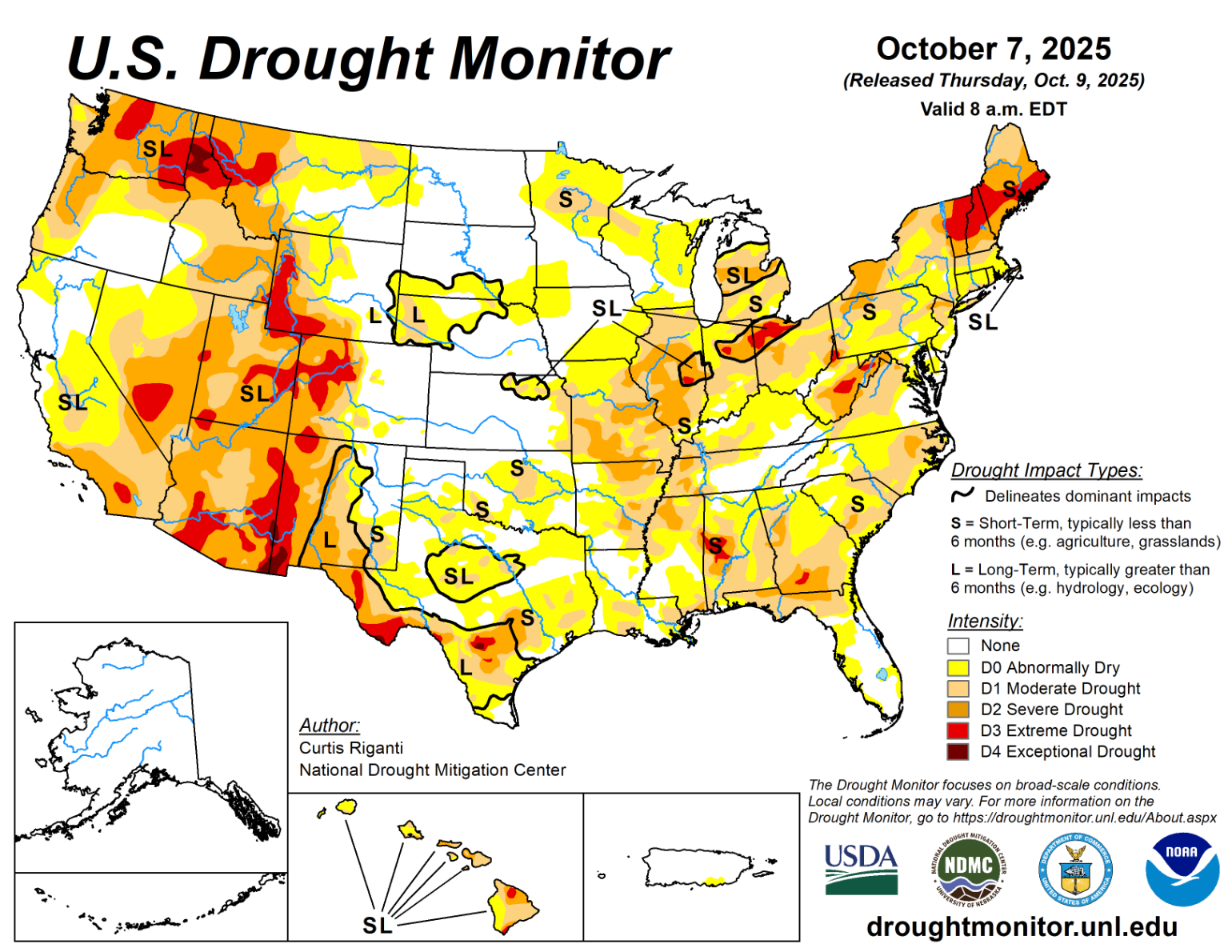Growing up in California, I've always experienced drought as a fact of life. The unfortunate reality is that these dry periods are intensifying and are no longer confined to the West. Given this trend of increasing droughts, the HydroForecast team regularly discusses how advanced forecasting can help manage water when it’s in short supply.
A recent report from the U.S. Geological Survey (USGS) showed record-low streamflows and rare drought conditions across New England, highlighting a sentiment we’ve been hearing from our customers across the country: it’s been a dry summer.
The U.S. Drought Monitor’s latest map shows how large parts of the country are experiencing some level of drought:
Each of these regions faces a common challenge: making critical decisions about water allocation, restrictions, and infrastructure operations using outdated forecasting tools that assume the climate hasn’t changed. When you don't know what's coming, it's nearly impossible to balance competing demands—maintaining reservoir levels for power generation, ensuring adequate flow for water supply, and protecting critical aquatic ecosystems—without either over-restricting or running dangerously low.

In California, drought was an ever-present topic of conversation. It felt like everyone was using reservoir water level tracking tools and following the latest news around water curtailments. When I recently moved to New York, I thought the days of speculating about how long the current drought would last were behind me. However, the familiar topic has reared its head in an unexpected way–within months of my move, I found myself tracking the same drought maps and water restrictions I thought I'd left behind in California.
As historical climate patterns change and challenge our infrastructure, I’m hopeful that new tools and technology can provide critical early information to help conserve and adapt to water shortages.
Managing water in unfamiliar weather requires tools that adapt as quickly as conditions change. Our newest Seasonal-3 model gives water managers the advance notice they need to implement restrictions before reservoirs reach crisis levels, allocate limited water, and communicate clearly with stakeholders.
Our theory-guided machine learning approach combines ensemble weather forecasts, earth observation data, and real-time data , to give water managers reliable streamflow data months in advance. This is especially critical in areas facing unprecedented restrictions and short supply.
Whether you’re making water supply decisions, optimizing energy markets, or planning for the next storm, HydroForecast adapts to the signals of today’s reality—not just the patterns of the past.
Contact our team to learn more about HydroForecast.